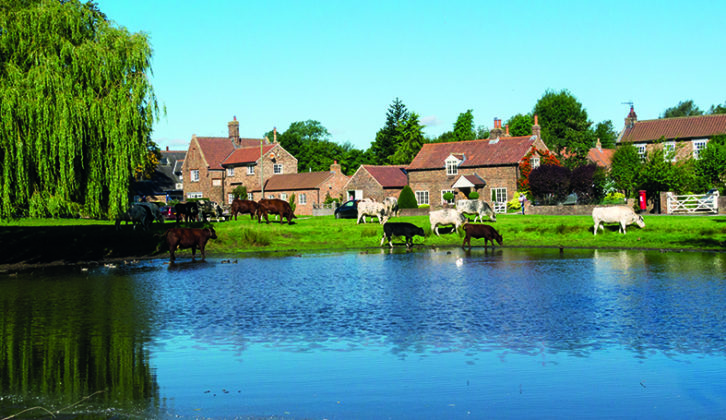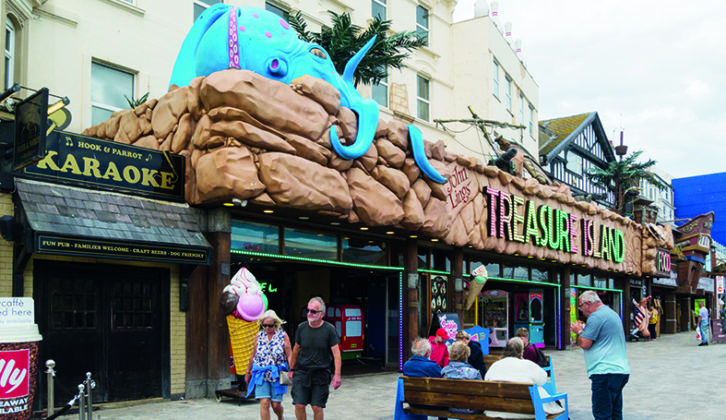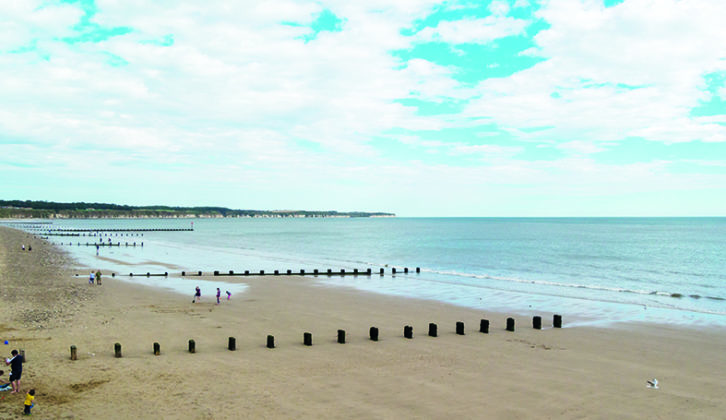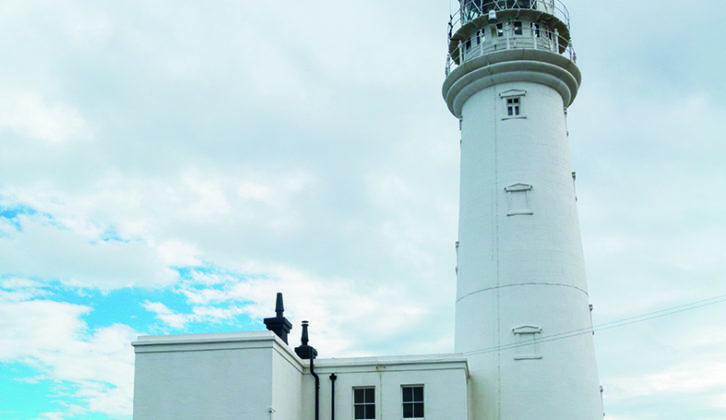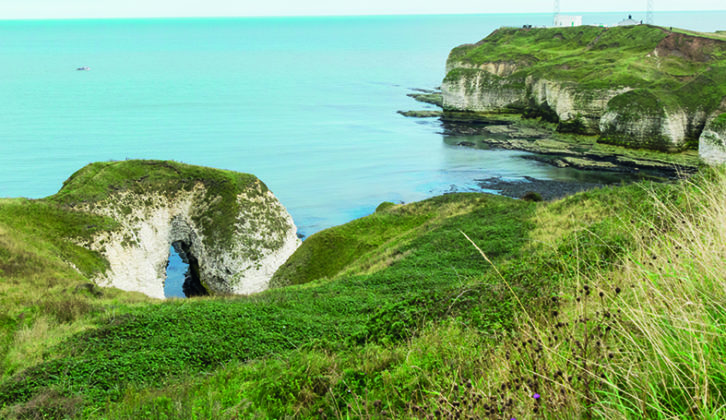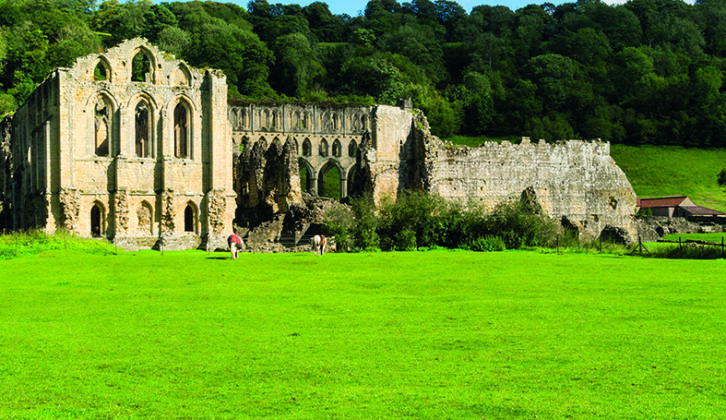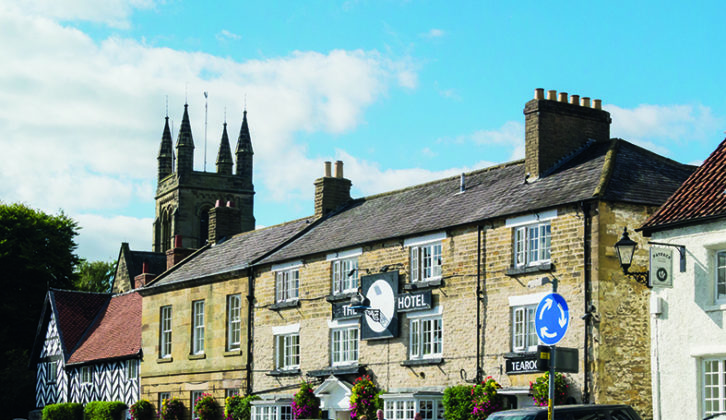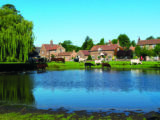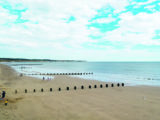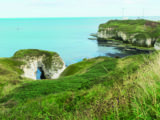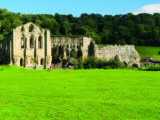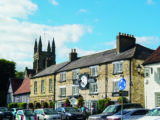When all domestic travel restrictions had been lifted, we decided to go away as soon as possible in our motorhome, Hilary Hymer, for a four-night stay. We chose York as a base for exploring the area around the North York Moors National Park.
We opted for a campsite in Acaster Malbis, which was perhaps not the best side of York for where we wanted to visit, but had easy access to the ring road, which meant we wouldn’t need to travel through the city itself.
Established in 1965, Moor End Farm is a small, family-run site in a quiet countryside setting, with all the basic requirements. However, its location in such a rural area meant that public transp9rt would be limited, so we had the choice of taking Hilary off-site daily to travel along the narrow roads in the area, or hiring a car.
We opted for the latter, using our usual rental company, Enterprise, which had a branch nearby, just a four-mile trip to collect us from the site.
Acaster Malbis, a small village on the River O(use in a lovely part of North Yorkshire, has the added benefit of The Ship Inn, an excellent pub serving good food and within easy walking distance of our site. The nearby village of Copmanthorpe has a supermarket, post office and various shops for topping up essential supplies.
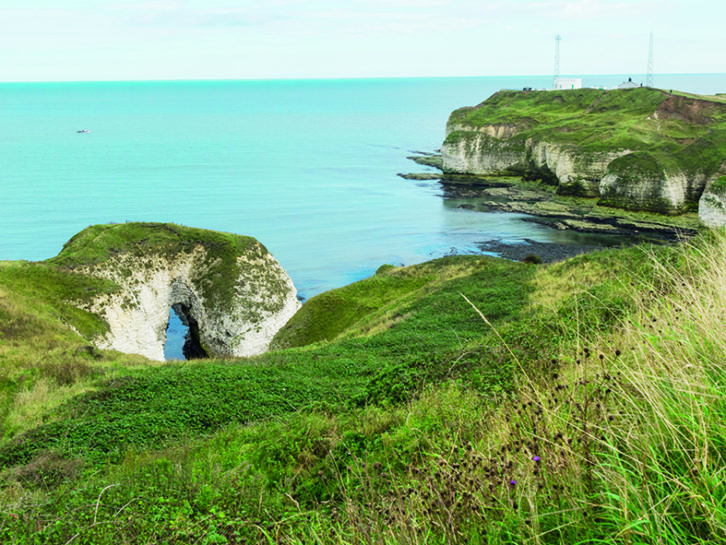
Historic market towns
The next morning, the Enterprise rep collected us from the site to pick up the car and because this took some time, we decided not to travel far that day. We opted for a visit to Malton and Pickering, two fine old market towns. Malton is also foodie heaven, with many award-winning restaurants, interesting markets and traditional old-fashioned charm. Pet-owners will be pleased to know it has been named one of the most dog-friendly spots in the UK, and the best in Yorkshire.
We enjoyed wandering the streets, with their mix of independent and chain shops. Having missed our usual morning coffee-break, we decided on an early lunch at Leoni’s, in Wheelgate.
It was very popular, so we had to queue until a table became available, but we were glad we did. Run by Simon Robertson, a three-times winner of ‘Barista of the Year’, it was an inspired choice, with an excellent menu and superb food.
Suitably refreshed we moved on to Pickering, on the edge of the North York Moors National Park overlooking the Vale of Pickering in the south.
This pretty town is a popular tourist destination and like Malton, has many independent shops and a vibrant atmosphere. Its attractions include the North Yorkshire Moors Railway, a famous heritage line, an imposing medieval castle, and the stunning Church of St Peter and St Paul, built on a site dating from Saxon times and boasting superb 15th-century wall paintings.
Celebrating local life
The Beck Isle Museum is also well worth a visit, to see the fascinating displays of local businesses, including a blacksmith’s, barber shop, draper’s and hardware store. Housed in a Grade II-listed Regency building since 1967, the museum has been dubbed North Yorkshire’s answer to London’s Victoria and Albert – with 27 exhibition rooms, each based on a different historic theme.
Pickering also has no shortage of cafés, tearooms, restaurants and pubs – the only problem is trying to decide where to eat and drink! And despite being quite small, the town is a performing arts hub, with no fewer than three theatres.
Off to the seaside
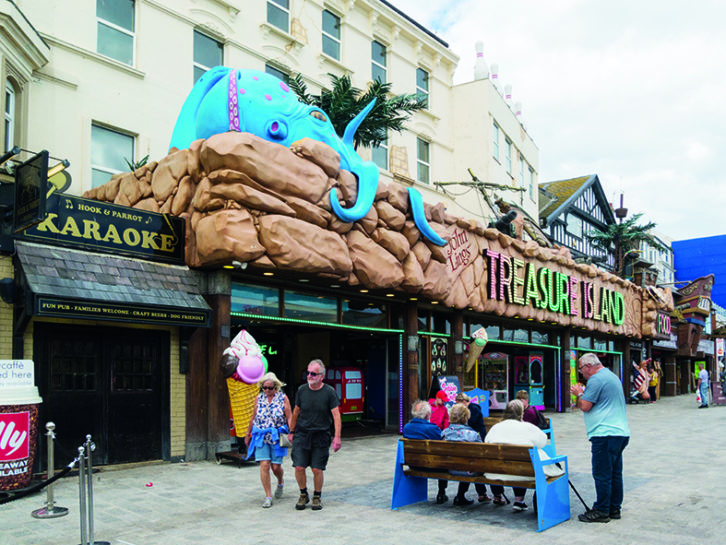
The following day, we decided to head to the coast. Having previously visited Scarborough, we decided to explore Bridlington instead.
Bridlington has a small harbour and a working fishing fleet, but is best known for its lobster.
There are long stretches of sand for walks, but much of the Esplanade is taken up by fairground attractions and restaurants serving fish and chips or pizza. We did find a reasonable lunch at The Freeman Cookhouse, also on the seafront.
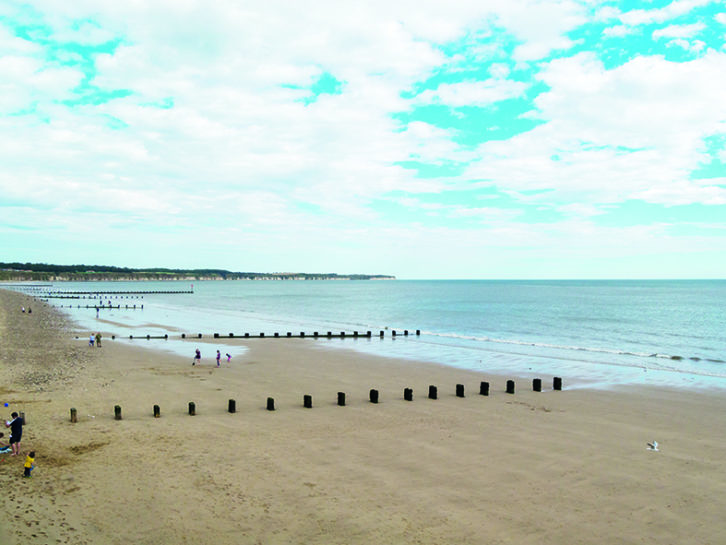
Deciding Bridlington was not really for us, we headed towards Flamborough Head, a 13km promontory between Filey and Bridlington Bays. These are two lighthouses here, and the main one on the headland was built in 1806. It is sited above white chalk cliffs, from which the sea has carved out numerous grottoes and caves.
There is a lovely footpath along these cliffs, which have been designated a Site of Special Scientific Interest and are great for birdwatching, as well as walking. Huge colonies of gannets, kittiwakes and puffins nest on the cliffs in this area, and Bempton Cliffs, on the northern side of the headlands, is an RSPB Reserve. We spent a fine afternoon here before heading back to the site.
On our last full day, we decided to explore the North York Moors National Park, stopping off first at Nun Monkton, which was marked on our map as a ‘picturesque village’.
This turned out to be the highlight of our trip – as we entered the village, a herd of cows was wandering across the cricket field into the centre, to stop at the duck pond for a drink, grazing on the village green as they moved through.
The village has a primary school housed in a building dating from 1905, and a charming pub on the green, The Alice Hawthorn. We spent far longer than expected here, photographing this quintessentially English village.
Exploring the National Park
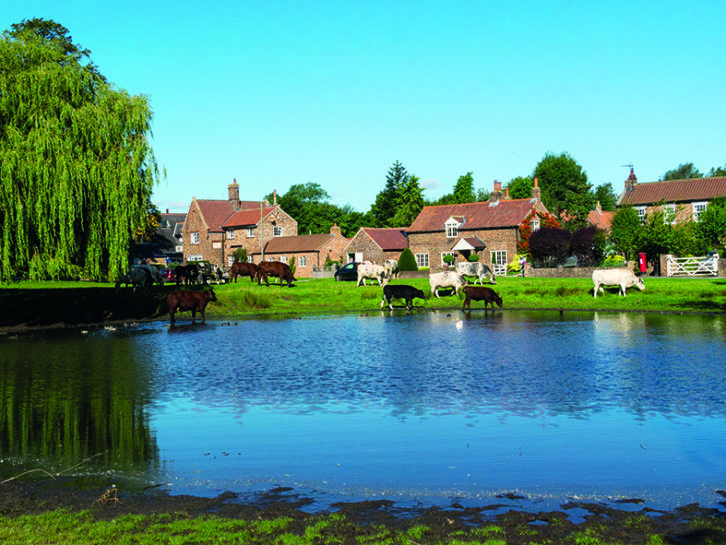
We still had some way to go to reach the National Park, so headed up the A19 to Osmotherley, also marked as a ‘picturesque village’ on our map.
This pretty place is on the 110-mile Cleveland Way, a National Trail first established by Natural England. We had hoped to stop and explore here, but it was so busy, it proved impossible to find a parking spot. Feeling a bit disappointed, we drove another few miles to the next village on our map, Swainby, which was much quieter.
During the 19th century, Swainby expanded to house miners who worked in the nearby hills, mining ironstone and jet. Its most notable feature is Scugdale Beck, which flows through the middle of the village, with a road on each side.
Swainby is close to the ruins of Whorlton Castle, thought to have been abandoned in 1428 because of the Black Death. Views to the east of the village show the Cleveland Hills at their most rugged.
Scenic journey, splendid ruins
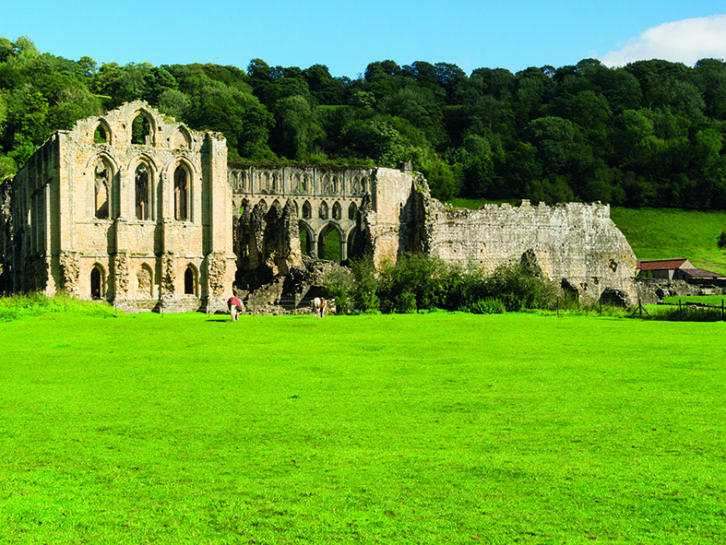
After a good lunch at The Black Horse, we drove further into the National Park, picking up the B1257 and heading south towards the popular and very pretty market town of Helmsley.
We made a slight detour on the way, to see the splendid ruins of Rievaulx Abbey. This former Cistercian abbey was one of the great religious houses in England until 1538, when it was seized in Henry VIII’s dissolution of the monasteries. Now an English Heritage property, Rievaulx is open to visitors but you can admire the ruins from outside the walls, with good views to be had from the road running alongside.
Then it was onwards to the final destination of our trip, picturesque Helmsley, located where Ryedale leaves the moors and joins the Vale of Pickering. We found a spot to park in the busy market square and enjoyed wandering around the interesting shops and streets.
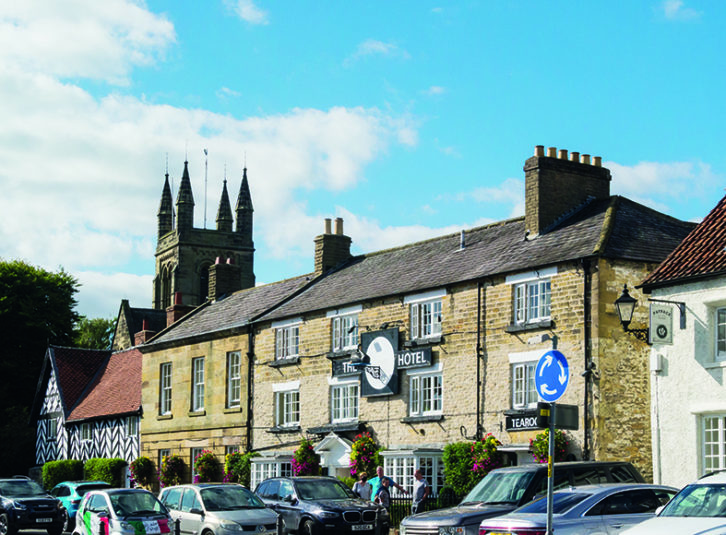
The ruins of Helmsley Castle dominate the town. Much of the castle was destroyed in 1644, during the Civil War, but the imposing remains are now managed by English Heritage. We decided instead to sop off for afternoon tea before returning to our campsite.
More to explore next time
So ended our all-too-short visit to the York area, leaving huge swathes of the North York Moors National Park still to explore. We had previously spent time in York itself, so didn’t include the city in our itinerary this time, but we were pleased with how much we managed to fit in during our brief stay. This is a lovely area to discover, and we look forward to returning again soon.
TOUR ESSENTIALS
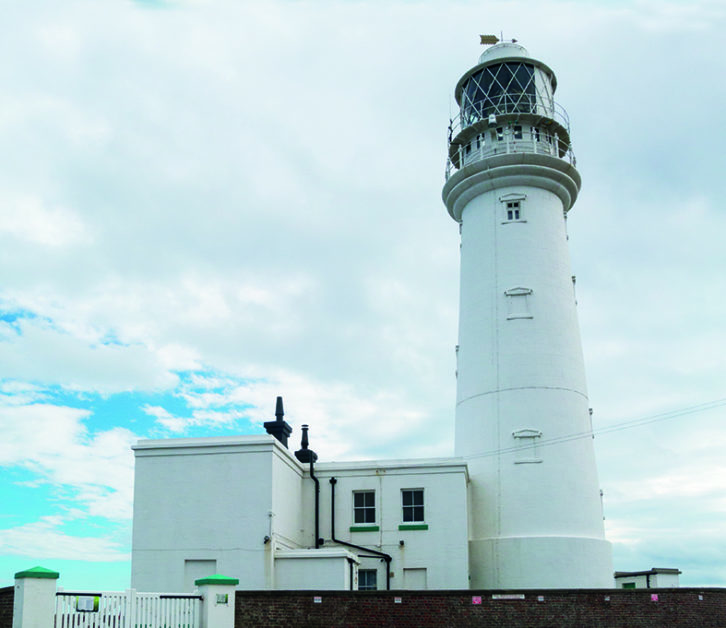
Where we stayed
Moor End Farm
- Acaster Malbis, York, YO23 2UQ
- Web www.moor-end-farm.co.uk
- Cost (pitch+2+hook-up) £23
Car Hire
Enterprise Rent-a-Car
- Web www.enterprise.co.uk
- Cost £149.36 with extra cover and protection deductible reduction
If you liked this… READ THESE:
North East England: Practical Motorhome Travel Guide
Ten top sites for visiting English Heritage & National Trust properties
A round-up of new-season motorhome models for 2022
If you’ve enjoyed reading this article, why not get the latest news, reviews and features delivered direct to your door or inbox every month. Take advantage of our brilliant Practical Motorhome magazine SUBSCRIBERS’ OFFER and SIGN UP TO OUR NEWSLETTER for regular weekly updates on all things motorhome related.
A herd of cows was wandering across the cricket field into the centre, to stop at the duck pond for a drink
